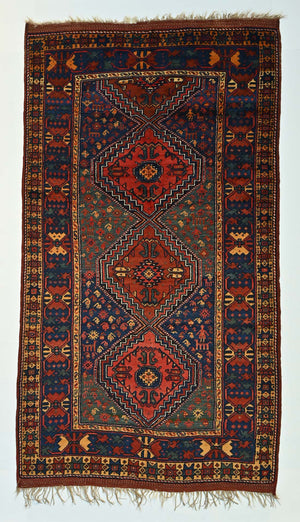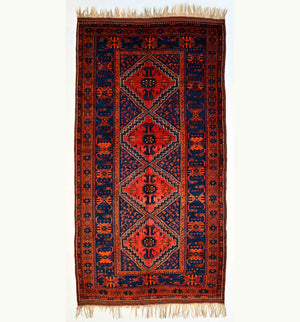Your Cart is Empty


Experience comes with age, and over time, thoughtfulness and calm often replace the playfulness and exuberance of youth. For some, ageing becomes a source of mourning and regret. However, when one finds peace in the belief in life's inherent beauty, every stage becomes a profound experience, worth savouring:
"Yes, oh yes, life is beautiful,
Like a hearth,
If you light it,
Its flame dances a dance,
Seen far and wide,
But if you don’t, it remains cold and dark,
And its darkness is our sin."
— from Arash, the Archer by Siavash Kasrai (1927–1996)
The rugs featured here are the remarkable work of a nomadic Kurdish weaver, descended from those relocated to Khorassan province in Northeast Iran by the Safavid kings during the years 1598 to 1601 AD.
These two pieces were created at different stages of her life. The older piece, woven in her youth, showcases a more playful and creative pattern, with less attention to detail and symmetry. The second piece, woven later in life, reflects her experience—its patterns are more conservative, its details refined, as close to perfection as a tribal rug can get.
Wool on a wool base.